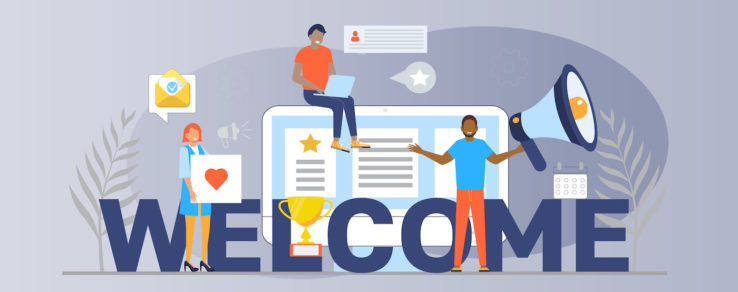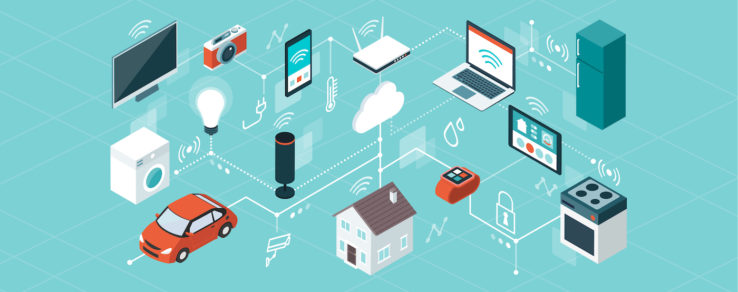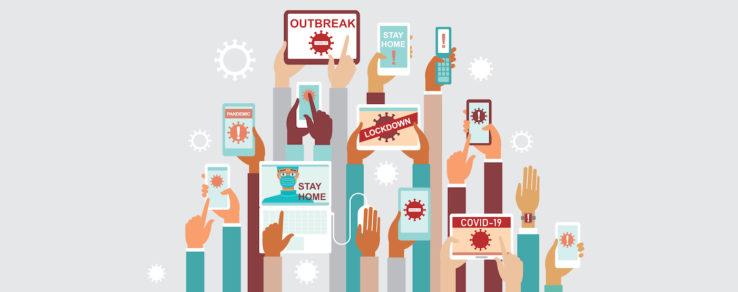As the old adage goes, “You never get a second chance to make a good first impression.” This is especially true of the first interactions between energy utilities and engagement with their new customers.
In Questline Digital’s Plugged In webinar, “How to Build Lasting Engagement with New Customers,” Questline Digital’s Josh Hanna and Sigma Computing’s Danny Codella provide insights on the value of implementing a Welcome Series to create a positive first impression and how this best-practice solution can transform digital customer relationships.
Make a great first impression with utility customers
A welcome email is the first impression your energy utility has with a customer after they sign up for service. According to Hanna, this is a great opportunity to acknowledge customers and educate them about your energy utility’s offerings. With digital engagement expectations already set by retail brands and other industries, your customers expect to hear from their energy utility. In fact, 74% of email subscribers expect to receive a welcome email from a company.
“Imagine yourself shopping at an online retailer where you get 20% off your next purchase if you join a loyalty program or submit your email address,” Hanna says. “As a customer, you already know that within minutes you’ll receive a thank-you email with the promo code. It’s a norm, not an anomaly, that customers want to hear from you.”
For energy utilities, a Welcome Series of three to five automated emails is a best-practice solution that creates multiple touchpoints and engages customers with valuable information. This is an opportunity for energy utilities to continue the dialogue with new or moving customers, become a proactive advisor and answer questions your customers don’t even know they have yet.
Each Welcome Series email should touch on a different topic:
- Welcome message
- Billing and payments
- Outage resources
- Community involvement
- Safety or energy savings
The top-performing Welcome Series topics are billing and payments. Your customers are looking for information on when they can expect their first bill, how to understand their bill and information on available payment options. This message is also an ideal time to encourage customers to sign up for paperless billing.
In the energy savings message, Hanna recommends incentivizing customers to shop at your energy utility’s marketplace. In a study of energy utility customers, 56% didn’t know their energy utility offered a marketplace to purchase energy-efficient products. Keep in mind, the most important information should be included in the beginning and middle of the series.
Key benefits of Welcome Series:
- Increases credibility of your energy utility
- Potential for increasing program conversions (i.e. paperless billing and outage text alerts)
- Incentivizes customers to shop at your energy marketplace
- Provides background on your energy utility
- Introduces customers to other programs/services offered by your energy utility
Exceed expectations with new customers
According to Hanna, 8 out of 10 customers expect to receive welcome emails after they sign up for a mailing list, such as joining a loyalty program. This expectation is happening outside the energy utility industry and is important for energy utility marketers to be aware of. In fact, 51% of all Welcome Series messages are opened and achieve high customer engagement (21.9% CTOR), according to Questline Digital performance metrics.
Codella shares that welcome messages will typically have the highest open and click-through rates of any communication you send. In fact, welcome messages have five times the number of click-throughs as standard marketing emails. “A welcome email series is absolutely critical for establishing customer relationships,” Codella says. “It’s a huge opportunity — the momentum is high and your brand is top-of-mind to customers.”
Welcome Series also has a profound impact on customer engagement with future marketing communications sent by your energy utility. Questline Digital’s performance data finds that Welcome Series graduates — customers who engaged with at least one Welcome Series email — engage with future utility emails at a 30% higher rate.
Codella adds that to be successful in building engagement with new customers, there are six components that your welcome emails should have.
Six components of an effective Welcome Series:
- Have a clear sender name and email address, subject line and preheader text
- Make the email personalized
- Say thank you
- Set expectations
- Give rewards
- Tell customers what you want them to do next
Beyond educating customers about your energy utility’s resources, each Welcome Series message should communicate next steps for customers. For example, do you want your customers to enroll in a program, download an app or click on a link to learn more information? A clear call-to-action is essential to increase program conversions.
Game plan for personalization
According to Codella and Hanna, segmentation and personalization are key to a successful Welcome Series. Welcome emails with personalization have six times higher transaction rates. However, before personalizing your messages, you need to understand who your customers are.
For example, are they residential or business customers? Renters or homeowners? Are they new customers or existing customers moving within your service area? Your energy utility can personalize emails by a customer’s geography, job title, purchase behavior, interests, anniversaries and more. Personalization is also beneficial in subject lines, helping to increase open rates by 26%.
“In the old days, you put a customer’s name on their email and that was considered personalization,” Hanna says. “Today, it’s about understanding the individual and who they are. From a customer experience standpoint, what information do they want or need to know?”
An investment in long-term engagement with new customers
To emphasize the importance of welcome emails, Codella notes that it takes 12 positive impressions to make up for one bad impression. First impressions are essential, as 51% of customers will never do business with a company again after a bad experience.
“A well-planned Welcome Series builds trust, gives customers valuable information, helps with upselling and sets the tone of your energy utility’s customer relationships,” Codella says. “First impressions are hard to shake — that’s why an investment in a Welcome Series is a must for energy utilities.”




